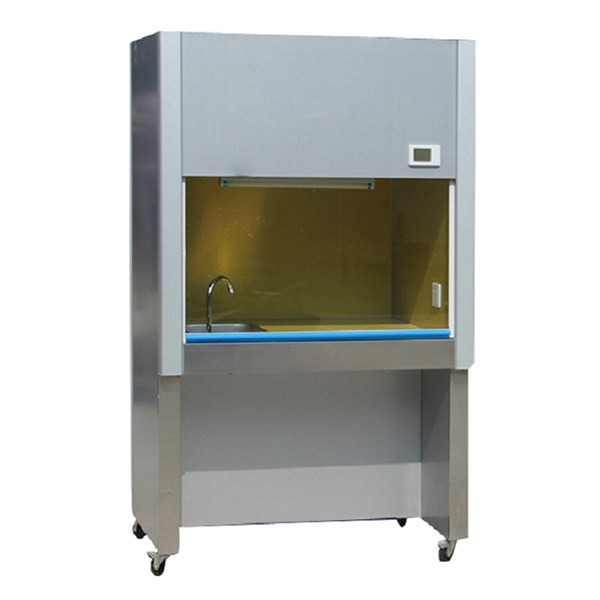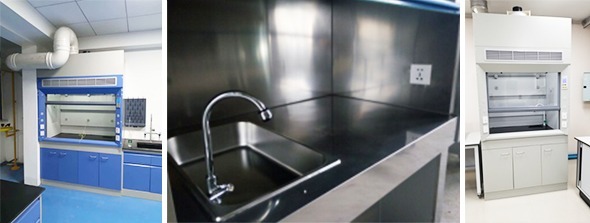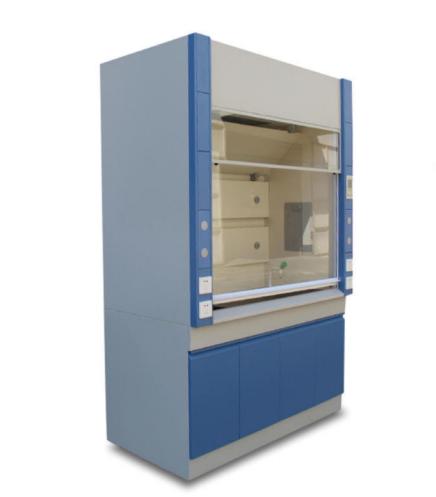A fume hood is a piece of laboratory equipment that is used to shield researchers and laboratory employees from dangerous gases, vapors, and airborne particles. These enclosed workplaces are critical for ensuring a safe and controlled environment when working with chemicals, volatile compounds, or biological agents. In this article, we will focus on the topic of how a fume hood work, exploring the working principle and working process of fume hoods to safeguard the health and well-being of laboratory workers.

Basic Working Principle of A Fume Hood
A fume hood’s basic operation is to capture, contain, and vent dangerous airborne particles away from the user. The fume hood inhibits the dispersion of hazardous compounds into the laboratory environment by providing a regulated airflow, hence lowering the risk of exposure.

The Working Process of A Fume Hood
To ensure the safe handling of hazardous compounds, A fume hood adopts a combination of containment, airflow control, and exhaust systems.
Containment
The fume hood creates an enclosed environment in which hazardous compounds are handled. It is a box-like construction with sides, a rear, and a sash-covered front opening. To control access to the workspace, the sash can be lifted or lowered. The fume hood’s interior is lined with chemical-resistant materials to prevent corrosion and make cleaning easier.
Airflow Control
To maintain a controlled atmosphere within the workspace, the fume hood includes an airflow control system. An exhaust fan, ductwork, and filters are all part of this system.
- Exhaust Fan: An exhaust fan generates negative pressure within the fume hood, attracting air and pollutants and directing them to the exhaust system.
- Ductwork: The fume hood is connected to the outside of the building or a designated ventilation system through ductwork. It removes polluted air from the laboratory.
- Filters: Filters are frequently used in exhaust systems to filter impurities from the air before they are released into the environment. Filter types that are commonly used include activated carbon filters for chemical adsorption and HEPA filters for particulate filtering.
Airflow Patterns
The exhaust fan creates negative pressure within the fume hood when it is turned on. This negative pressure forces air from the laboratory into the fume hood, via the front hole, and out the back.
Capture Velocity
The capture velocity is the controlled velocity at which air is sucked into the fume hood. The capture velocity is the rate at which air is drawn into the hood in order to capture and contain harmful chemicals. The capture velocity varies based on the nature of the compounds being handled and the laboratory’s specific requirements.
Baffles
Baffles are carefully placed inside the fume hood to direct the airflow. These baffles cause turbulence within the hood by disrupting the straight-line direction of the entering air. Turbulence aids in the mixing and diluting of dangerous compounds, enhancing their collection and containment.
Exhaust System
The exhaust fan then draws the trapped pollutants and air out of the fume hood. The exhaust fan is linked to a ducting system that transports contaminated air outside or into a designated ventilation system. Before being released into the environment, exhaust air may be filtered to remove any lingering impurities.

Sash Positioning
The position of the sash is critical to the functionality of the fume hood. The user can manage the airflow and maintain the desired capture velocity by adjusting the sash. It should be installed at a suitable height to provide an effective barrier between the user and the hazardous substances.
Safety Measures
Many modern fume hoods have monitoring and safety measures to assure peak performance and human safety. Airflow sensors to detect and maintain the required capture velocity, alarms to signal low airflow or malfunctions, and indicators to monitor filter saturation or system status are examples of such devices.
Summary
A fume hood is a vital instrument in laboratories, acting as a barrier between laboratory personnel and potentially harmful gases, vapors, and particles. Fume hoods effectively catch, trap, and eliminate airborne contaminants by combining airflow control, containment devices, and exhaust systems, protecting the health and safety of laboratory workers. Understanding how a fume hood works is essential for correct use, maintenance, and adherence to safety procedures, creating a secure and controlled atmosphere for scientific research and testing.
